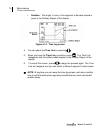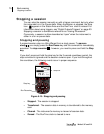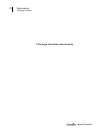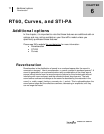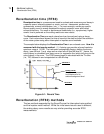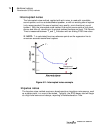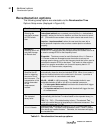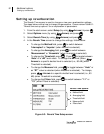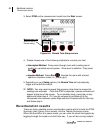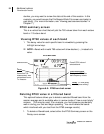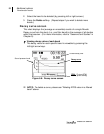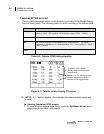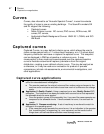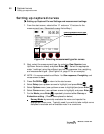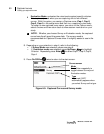
82 Additional options
Running reverberation test
Models SE and DL
Running reverberation test
There are a couple factors to consider when conducting a reverberation test.
Depending on if you will be measuring voice in a room, hall, theatre (etc..), ISO
3382 standard recommends measuring reverberation time for speech from 63 HZ
to 4 kHz. However for rooms with other intentions (i.e., music/acoustical
concerts), one-third octave bands from 100 Hz to 5 kHz can be used/applied. ISO
3382 also recommends a minimum number of recorded studies in order to obtain
a reliable reverb measurement session. This is done for two reasons: (1)
because the test signal is random noise, there will be a bit of run-to-run variance.
By taking a number of measurements from the same location and averaging them
together, you get a more reliable estimate of the actual measurement (2)
Because the acoustics in a room may vary, it is suggested to do spatial averaging
- taking measurements from multiple locations in the room and average them
together to get an average measurement for the room.
Once the setup options are selected, please follow the procedures below to run
and view RT60 measurements.
Reverberation (RT60) Test
1. Select setup parameters via the Reverb Time screen (see “Setting up
Reverberation” above).
2. (Skip this step if threshold is set to “Auto”.) View the ambient noise in the room
(the L
ZMAX
value) and note the value. (NOTE: To ensure a decay curve, at least
45 dB above background noise level is recommended.)
• To view the ambient sound in the room do one of the following:
(A) From the Start screen, select SLM as the measurement type and
select View Current Study.
•
Verify that the range setting is appropriate for the level being
measured. It is desirable to select the longest range that will not
overload. Press Up/Down Arrows to change range. (For more
details, please see “Measurement range”, page 60.)
• Press Run/Pause key and notate the average level. (NOTE:
you may need to press the Look-up softkey and select
Leq to view the average ambient sound level. For more
information please refer to, “Changing displayed
measurements”.) When completed, press Run/Pause key and
then press Stop key to end the session.
(B) Follow “A” above but select 1/1 or 1/3 as the measurement type.



